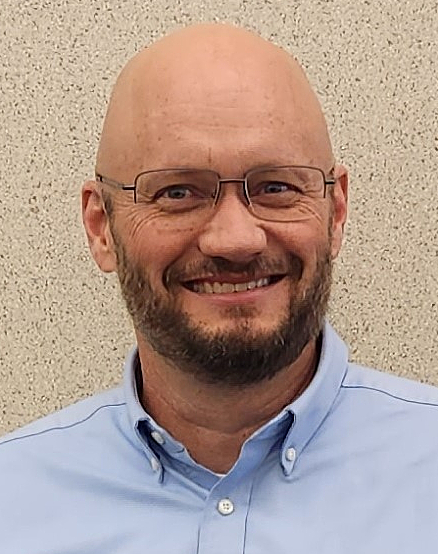AI is reshaping industrial operations – from real-time quality control to predictive maintenance and digital copilots on the factory floor. As these AI workloads become more mobile, data-intensive, and time-sensitive, private cellular networks are emerging as the critical infrastructure to keep them connected, reliable, and responsive. The convergence of AI, private 5G, and edge computing is defining the next phase of Industry 4.0.
In sum – what to know:
Connecting AI – AI already drives automation, inspection, and decision support in manufacturing; as applications expand to include live video, AR, and edge inference, they increasingly depend on private 5G networks.
Mutual reinforcement – Generative AI can help operate private 5G through intelligent diagnostics and automation, while the same networks provide the deterministic transport for next-gen multimodal AI workloads.
Scalable innovation – With trusted data governance, edge compute, and RAG models, enterprises can deploy AI confidently across industrial environments – unlocking productivity, efficiency, and resilience at scale.
Not all the good stuff always makes the cut. Here is a discussion with Jason Wallin, senior principal architect for ‘TechStack’ at US agricultural machinery manufacturer Deere & Company (John Deere), which was teed-up for a new RCR Wireless report about private 5G and generative AI (available here), but which was ultimately too late to make the mix. No matter; it is worth printing in full just because… well, it is good, and it covers a lot of ground.
Indeed, Wallin makes the case that industrial AI and private 5G reinforce each other within an Industry 4.0 context – where the former drives smarter operations on the factory floor, and latter provides the deterministic connectivity to support it. He identifies practical AI deployments, already in use on factory floors (for quality control, predictive maintenance, process optimization), and brings into view a new wave of AI retrieval-augmented (RAG) assistants.
Today, industrial AI is mostly assistive and analytic, but emerging use cases (augmented reality, camera vision, live inspections) need higher-bandwidth, lower-latency wireless – where private 5G gets the nod. AI doesn’t need 5G, per se, but it helps when AI becomes mobile, hungry, and urgent – is the message. Generative AI is different, he says; most models are compute-bound, not network-bound – so the bottleneck is the model itself, and not connectivity.
But again, when the inputs/outputs are on-the-move and/or high-bandwidth – as with video, robotics, and all kinds of streaming data – then private 5G is a must. AI doesn’t need 5G to think faster, clearly, but it helps to get the ideas across – on-time, every time. As well, and as discussed in the report, AI agents can assist with diagnostics, triage, and analysis to improve the operation and management of private networks themselves.
Wallin also touches on their correlation at the edge, around shared compute infrastructure – also discussed at some length in the report. The sense is that AI at the edge (especially camera vision and robotics) already aligns with private 5G, and that generative AI will follow the same path, and extend these capabilities. There is other stuff, too – about the need (or not) for domain LLMs, or at least the value of an industrial RAG interim to fine-tune general LLMs.
Plus, there’s stuff on cloud privacy and data governance. It is a visionary yet technical exploration of how AI and 5G are converging in Industry 4.0. But Wallin is best to explain, so here he is… (All the answers below are from him.)
What AI use cases do you use most in production / manufacturing environments? Do any of these ‘need’ private cellular networks?

“In production environments, AI is used to enhance quality control, predictive maintenance, and process optimization. For example, AI and machine vision technology are used to automatically spot and correct welding defects in real time by analyzing imagery of the weld, identifying gaps or misalignments, and adjusting parameters like speed or heat to ensure consistent quality.
“Today, our most active deployments are retrieval-augmented assistants, also called co-pilots or agents, that integrate with trusted enterprise systems and data to help dealers and internal teams with inventory lookups, product configuration and quoting, and service guidance, among other capabilities. While these generally run well on existing enterprise connectivity, generative AI that consumes live, higher bandwidth inputs demand reliable mobility, uplink capacity, and predictable latency. In those scenarios, private cellular networks can be an ideal solution, supporting applications for AR-guided work instructions or verification using video frames like multicamera inspection, AR support across complex production environments, and streaming telemetry or video to edge inference.
“Private wireless helps when the bottleneck is moving large or real-time data between mobile endpoints and the on-prem edge. Private cellular networks deliver the reliable, high-capacity connectivity infrastructure needed to support new technologies, enabling a more streamlined and automated manufacturing ecosystem for smart factories. The result is increased line efficiency, more consistent product quality, and greater value for customers.”
Is there an intrinsic link between private cellular networks and generative AI in Industry 4.0?
“Private cellular networks provide a consistent, reliable, and flexible foundation for data-intensive applications. Because private wireless networks can be tailored to an organization’s specific needs, it offers greater control, adaptability, and security than traditional networks. As operations expand or technologies evolve, these networks scale seamlessly, helping future-proof facilities for long-term success.
“Most LLM/MLLM pipelines are computebound – token generation and reasoning dominate end-to-end latency, not the last hop network – so private cellular networks do not reduce decode time. Where private wireless networks and generative AI do reinforce each other is when inputs/outputs are mobile, high-bandwidth, or require tight jitter bounds, such as streaming video to on-prem edge for perception or coordinating mobile robots. As these patterns expand, private cellular networks become increasingly valuable, primarily as a predictable data plane that feeds fast edge inference.”
While one does not need the other, is it true that gen AI will help with the operation / management of private cellular networks in industry? How?
“Yes, generative AI can significantly help with the operation and management of private cellular networks, and networks in general, particularly in industrial settings. Agents for network and infrastructure operations are already delivering practical wins, including faster triage and root cause summarization, change and rollback suggestions, explainers, documentation generation, and better search across design documents and logs. By adding an operator experience layer, generative AI reduces toil and time-to-resolution. For example, when an issue is diagnosed on the factory floor, AI can perform diagnostics first, allowing operators to focus on targeted troubleshooting rather than exploring every possible issue, easing the burden on the network operator.”
Is it also true that gen AI will help with the digital applications / processes that go on top of private cellular (and other industrial) networks?
“Generative AI can play a powerful role on top of private cellular and other industrial networks. Copilots improve frontline productivity regardless of the underlay network, with private cellular networks adding value when work is highly mobile or multimodal heavy. As generative AI use cases expand into mobile and multimodal workflows, and as models and agent frameworks mature for these patterns, reliable low-latency wireless becomes increasingly important. Pairing on-prem edge inference with private wireless could help achieve the needed performance envelope, enabling small models or microagents on the on-prem edge for high performance loops, with escalation to larger models when latency budgets allow. These patterns are still extremely nascent, however, and there are still many unknowns at this time.”
Is there a correlation between these two at the industrial edge – on site – with the use of shared compute? Or is this edge correlation only between private cellular networks with other-AI (camera vision etc.)?
“The strongest correlation is among cellular networks, edge compute, and vision/robotics. Shared onsite compute (GPU/TPU/CPU) runs classic computer vision tasks, while generative AI could provide higher latency guidance, summarization, and retrieval. Smaller models could potentially run at higher clock cycles, and a tiered approach could come into play trading latency for capability, although these are also very nascent patterns.
“The closest integration today is still between advanced cellular networks and traditional AI workloads, like computer vision or predictive analytics, which rely on continuous data streams. Generative AI is beginning to build on that foundation, using the same wireless and edge infrastructure to support faster decision-making and smarter operations right where the work happens.”
Does each industry (and maybe each enterprise) require a domain specific version of LLMs? How is this achieved, and with which partners?
“The pattern we see working today is Retrieval-Augmented Generation (RAG)first over governed data, with light task tuning where it measurably helps. Foundation models, along with smaller distilled variants, cover most needs. Specialization is more about the data, tools, and evaluations than creating a bespoke “industry LLM.” However, as we explore smaller models performing specialized tasks with different tradeoffs, it is certainly possible to see domain or task-specific models play a bigger role. We expect domain-specific models to grow in importance generally.
Creating a domain specific LLM requires close collaboration with cloud and AI providers, researchers, and customers to ensure these models are grounded in real-world needs and deliver insights that truly enhance the work being done.”
What is your policy on cloud privacy and security?
“Deere designs and operates AI solutions with security and privacy by default. We follow recognized frameworks and enforce least privilege access with encryption in transit and at rest. We apply strict data use controls, including prohibiting model providers from training on our data without explicit approval, and honor regional data residency/sovereignty requirements. Our governance program monitors evolving regulations and adapts our controls accordingly.
“Additionally, our customers have full control over their data and decide who they share it with and when. Our job is to make sure that their data is properly secured at all times. The John Deere Operations Center, a cloud-based platform that allows farmers to monitor equipment performance, analyze field conditions, and make data-driven decisions, provides a secure environment for customers to collaborate with trusted advisors or local dealers.”

